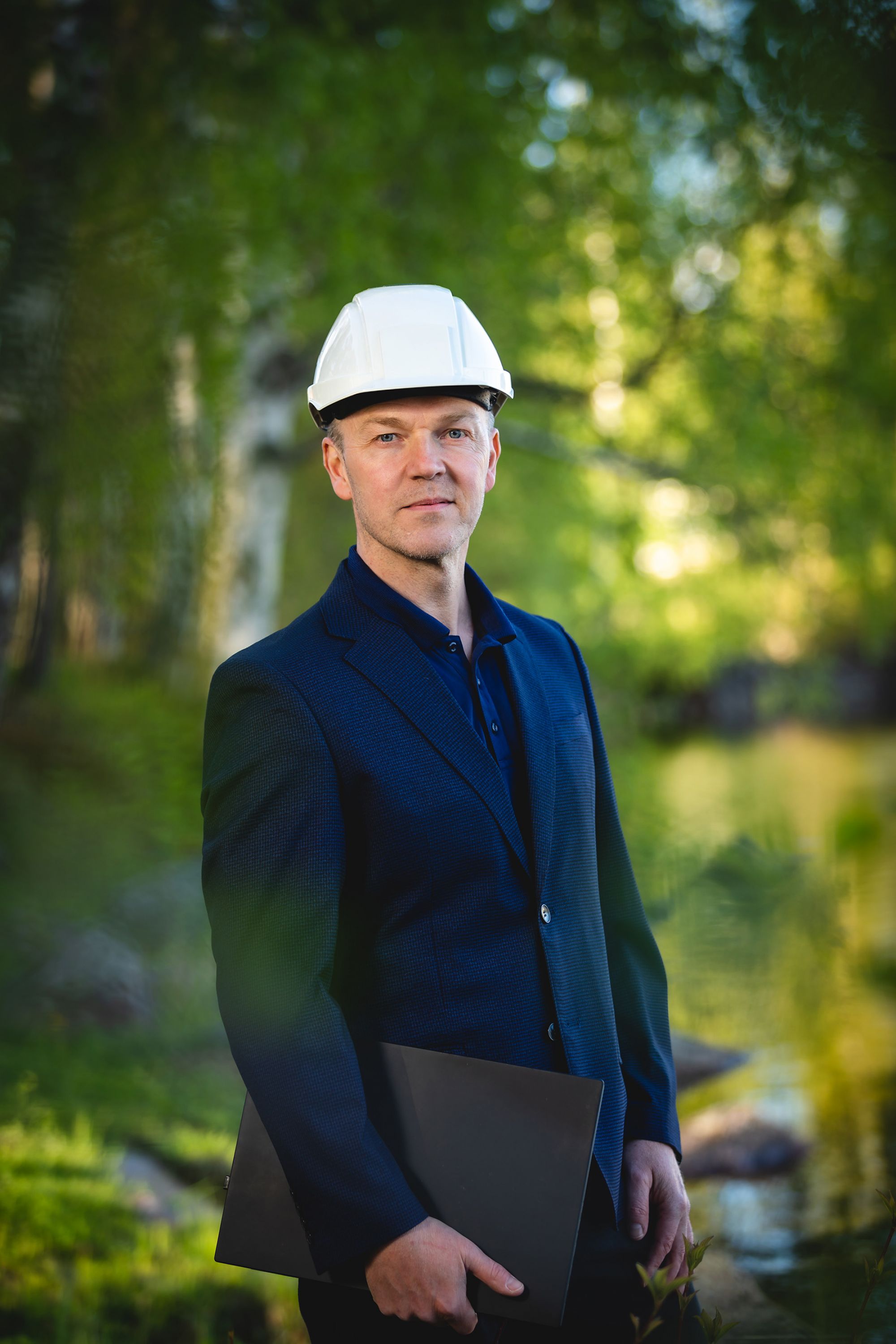24.5.2020
Text Sepi Roshan

24.5.2020
Text Sepi Roshan
Quality Assurance Manager Mr Kimmo Minkkinen. Photo: Sammet Dampers.
Wherever we are based, we are all living on one planet. Its beauty and resources sustain us. As a thank you and to continue benefiting from what the planet offers us, there is growing recognition that the competing demands of businesses must be balanced with environmental needs. Many organisations are keen to safeguard the resources which support their businesses and which are required to fulfil the needs of future generations. Yet translating such a desire into commitment and action can be difficult in competitive, international markets. In response, the International Organisation for Standardisation (ISO) issued the revised ISO 14001 Environmental Management Systems standard in 2015. ISO 14001 provides a framework aimed at protecting the environment while enabling businesses to respond to changing environmental conditions. To account for specific circumstances, ISO 14001 gives autonomy to organisations over how they achieve the aims.
At Sammet, Mr Kimmo Minkkinen, Quality Assurance Manager, is tasked with implementing ISO 14001. Minkkinen is responsible for Sammet’s quality assurance and environmental management systems. “The most important aspect of my environmental management role is ensure all functions and teams are committed to minimising environmental impacts at each stage of the product and service life cycle”, he says. This means reinforcing Sammet’s culture of working towards high quality, practical solutions in co-operation with an exceptional set of partners along its value chain.
“Concentrating on several small improvements is better than introducing wholesale changes that can result in a large failure, or worse, creating a greater aversion to change”, states Minkkinen.
Stepping away from a well-worn and familiar path can be challenging, even when it is likely to be beneficial. The diversity of thought and circumstances throughout the world and in leadership make finding a common approach to environmental management difficult. Minkkinen, however, is determined and steadfastly optimistic about the ability of organisations to orchestrate the necessary changes and sees ISO 14001 as providing an essential, helping hand. Sammet’s approach focuses on actions that are practical, feasible and easily implemented.

Photo: Tero Takalo-Eskola.
Adjusting to change can sometimes seem too time-consuming and costly. Even if an organisation is interested in environmental management, competitive pressures can make compliance seem onerous. Contrary to popular belief, the most innovative market leaders are realising that creating environmental management systems is fast becoming a competitive advantage. To Minkkinen, the business case is clear. For instance, technological solutions which can sustain the environment already exist and are accompanied by reduced overall operating costs. Sammet is finding that their customers, which tend to be the bigger players in the market, have their own sustainability programs and expect environmental management systems to be in place throughout their supply chains. “Some of our customers require a certified system in place and within the industry overall, certification is becoming a more significant criteria in supplier selection”, explains Minkkinen. Rather than a cost, it seems that environmental management is becoming a selling point.
Sammet ensures its own supply chain adheres to specific criteria. “We have specific ISO 14001-compliant requirements and controls in place which flow through our value chain. Our partners are kept informed about all changes and we rigorously monitor compliance”, says Minkkinen. Suppliers are subject to regular audits. In addition, Sammet inspectors examine supplier workshops to ensure adherence to environmental management protocols during standard quality control testing. In the rare case of non-compliance, suppliers are coached and provided with precise, written instructions for corrective actions. Any new suppliers must first pass stringent quality and environmental audits. “If there are two equally qualified suppliers, we prioritise and engage the one with certified systems for quality control and environmental management”, emphasises Minkkinen.
Some of the environmental initiatives introduced by Sammet include use of fully recyclable packing materials throughout its supply chain, fitting led lights throughout their head office in Jyväskylä, Finland to reduce electricity consumption and inter-departmental collaboration to generate innovative production processes to reduce energy consumption during assembly and repair. Travel is closely monitored to minimise CO2 emissions as part of the group sustainability program. “We collect information about work-related travel and modes of transportation to monitor emissions”, says Minkkinen. To keep emissions low and on target, Sammet embraced technology such as video meetings to minimise their footprint.
Sammet employees have embraced the new environmental initiatives very well. “We are in the clean-tech business and our people are quite aware of the benefits of having an environmental management system. There is a very strong and positive culture towards sustainability”, says Minkkinen proudly. For instance, whereas all employees would drive to work, relocating the head office to Jyväskylä resulted in half of them cycling or using public transportation to commute to work. As an optimist, Minkkinen cautiously suggests that possibly, one of the rare benefits of the past coronavirus lockdowns was that many people, including himself, started working from home more and now avoid unnecessary travel.
At home, Minkkinen is equally committed to environmental sustainability. “I am learning from my daughter”, he says. “She is a vegetarian, recycles everything and avoids unnecessary consumption of all kinds. I am inspired by her lifestyle and can see how small her environmental footprint really is”. Minkkinen’s advice to others is to start with small steps and focus on what you really need to consume. “Not everyone has to be like my daughter because we all live under different circumstances. Every small personal act can make a difference. When all these small acts are multiplied by millions or billions of individuals, the change will be enormous”, he says. These are wise words indeed, from someone whose livelihood depends on a sustainable future. In this sense, Minkkinen speaks for all of us.
